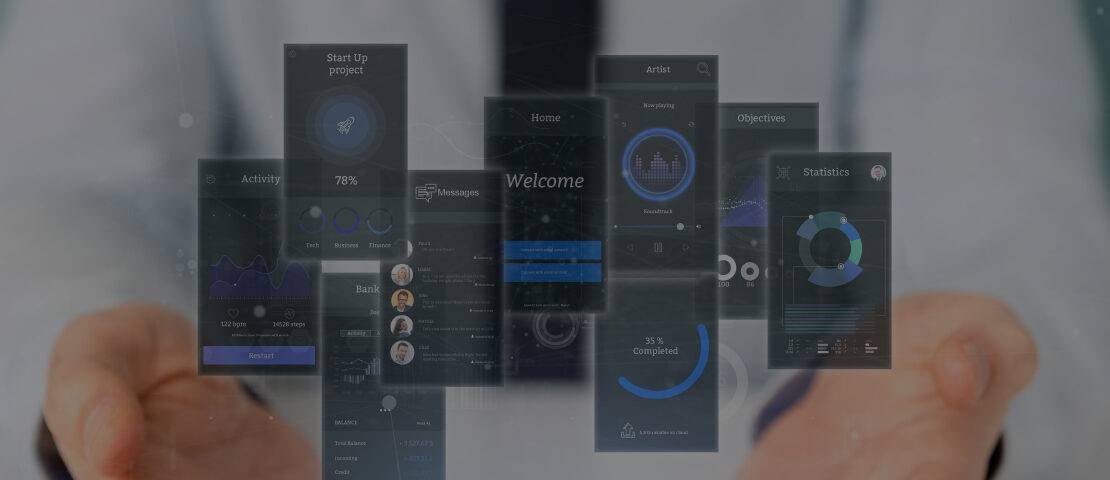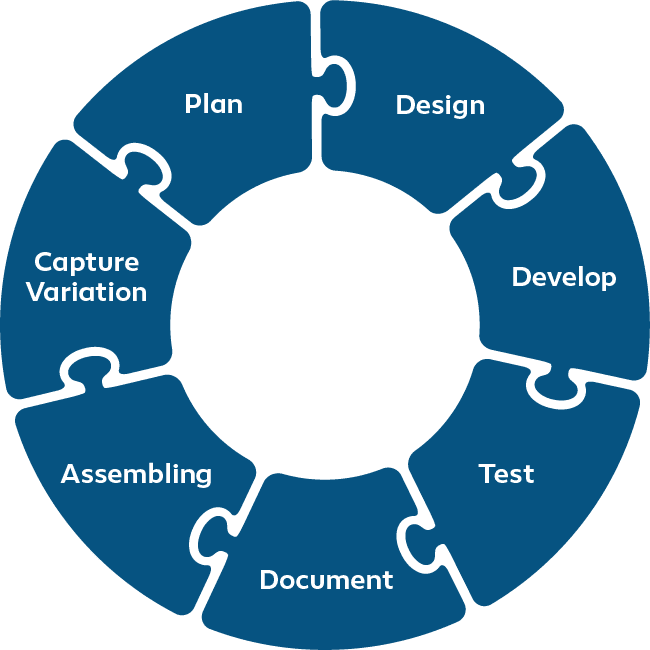- April 21, 2023
- Posted by: Dhanasekar Mohan
- Category: Application Engineering

Overview of component-driven development (CDD) and building UI in isolation
Component-driven development is an approach that aims to address some of the pain points in traditional UI development, particularly when it comes to reusability. In component-driven development, UIs are built as a collection of reusables, self-contained components that can be easily combined and reused across different applications or parts of an application.
In traditional UI development, reusability can be challenging because user interfaces are often built as a single, monolithic codebase. This means that if a particular component needs to be reused in multiple places or applications, it must be manually copied and pasted, which can lead to code duplication and maintenance challenges. Additionally, modifying a component in one place can be difficult or impossible without affecting other parts of the application.
Component-driven development addresses these pain points by breaking down UIs into modular, reusable components that can be easily combined and reused across different parts of an application or even across different applications. This approach allows developers to create a library of reusable UI components that can be quickly and easily assembled into new interfaces.
By promoting component reuse, component-driven development can also lead to improved consistency and maintainability of UIs. Developers can ensure that each component functions and appears consistently across different parts of an application, and updates or changes can be made more easily by modifying a single component rather than modifying multiple copies of the same component.
Every UI element or a combination of UI elements is considered as a Component. Component driven development is a UI development approach that emphasizes building and reusing small, modular UI Components. Each component is designed to perform a specific function or provide a specific UI element, and these components can be combined to create larger, more complex systems.
Also read: Enable Increased Revenue using Rapid Application Development
Benefits of Component-Driven Development
Documentation: Component-driven development encourages documentation of each component’s behaviour and relevant states, which makes it easier for developers to understand how each component should be used and how it fits into the larger system. This documentation also serves as a reference for future development and maintenance, which saves time and reduces errors.
Playground: A playground environment allows developers to experiment with components in isolation without worrying about how they will interact with other parts of the system. This makes it easier to test and refine components before integrating them into the larger application.
Isolated & Reusable Components: The component-driven development approach encourages the creation of reusable components that can be used in different parts of the application. This saves development time and improves consistency, as developers can reuse tested and verified components rather than building new ones from scratch.
UI Asset Library: As developers create and refine components, they can add them to a UI asset library, which serves as a centralized repository of UI elements. This library can be used by other teams and applications, which saves time and improves consistency.
Test-Driven Development: Component-driven development is compatible with test-driven development, which involves writing tests before writing code. This approach ensures that components meet their requirements and work as expected, reducing errors and improving reliability.
Collaboration: Component-driven development encourages collaboration between teams, as components can be developed and tested separately before being integrated into the larger system. This approach reduces the risk of conflicts and errors and allows teams to work more efficiently.
The Component Driven Development Process
The process of component-driven development typically involves the following steps:
- Designing and prototyping individual components based on user requirements and design standards.
- Mapping Data points with Components
- System Integrations with API (Optional)
- Iteration and capturing variations based on the user feedback, data and behavior of the design and functionality of each component.
Design systems and style guides play a critical role in component-driven development (CDD) by providing a set of standards and guidelines for designing and developing UI components. A design system is a collection of reusable components, patterns, and guidelines that define the look and feel of an application. A style guide is a set of design guidelines and standards that define the visual and stylistic aspects of an application.
In CDD, design systems and style guides provide a shared language and set of guidelines for designers and developers to ensure consistency across different parts of an application or even across different applications. By establishing a set of design standards, design systems and style guides help ensure that UI components are reusable, modular, and maintainable.
Some of the key roles that design systems and style guides play in CDD include:
- Establishing visual consistency: Design systems and style guides establish a set of visual guidelines and standards that help ensure that UI components look and function consistently across different parts of an application. This can help improve the user experience and reduce the time and effort required to design and develop new components.
- Encouraging reusability: By defining a set of reusable components and design patterns, design systems and style guides promote component reuse and reduce the need for developers to write new code for each new UI element.
- Facilitating collaboration: Design systems and style guides provide a shared language and set of guidelines that help designers and developers work together more effectively. By establishing a common set of standards, design systems and style guides can reduce misunderstandings and improve communication between teams.
- Promoting efficiency: By providing a set of standards and guidelines, design systems and style guides can help reduce the time and effort required to design and develop new UI components. This can lead to more efficient and cost-effective development processes.
Development Approach in Component Driven Development
Fig: Component Driven development approach
Tools and Framework available for CDD
| Tool/Framework | Description | Key Features |
|---|---|---|
| Storybook | Open-source tool for building UI components in isolation | – Develop, test, and document components independently of main application- Large ecosystem of add-ons and integrations – Supports many popular front-end frameworks https://storybook.js.org/ |
| Fractal | Tool for creating and managing web design systems | – Create and organize reusable components – Tools for testing, documenting, and publishing component- Can be integrated with other front-end tools and frameworks https://fractal.build/ |
| Pattern Lab | Static site generator for building UI design systems | – Tools for creating and testing reusable components- Integrates with many front-end tools and frameworks- Supports both HTML and React components https://patternlab.io/ |
| Styleguidist | Tool for creating living style guides and UI component libraries | – Build, test, and document components in isolation- Tools for integrating components into larger applications- Supports many popular front-end frameworks https://react-styleguidist.js.org/ |
| Bit | Tool for building, sharing, and reusing UI components | – Create and manage your own component libraries- Tools for testing, documenting, and sharing components with others- Integrates with many popular front-end tools and frameworks https://bit.dev/ |
| Atomic Design | Methodology for creating and managing design systems | – Guidelines for breaking down designs into smaller, reusable components- Framework for designing, testing, and maintaining components over time – Can be used with many front-end tools and frameworks https://bradfrost.com/blog/post/atomic-web-design/ |
Best Practices for Component-Driven Development
- Start with a design system that defines the visual language of your application.
- Use a component library to speed up development and ensure consistency.
- Develop components in isolation to make them modular and easier to test and reuse.
- Write reusable code that can be used across different components and applications.
- Test your components thoroughly to ensure they work as intended and are compatible with different devices.
- Document your components to make it easier for other developers to use and understand them.
- Collaborate closely with designers to ensure components align with the overall design system.
- Use version control tools like Git to track changes and manage collaboration among team members.
Conclusion
In conclusion, component-driven development (CDD) is a software development approach that emphasizes the creation of reusable, modular, and maintainable UI components. By adopting CDD, development teams can streamline development, improve collaboration, and ensure consistency across different applications.
The benefits of CDD include faster development, increased productivity, better quality, and easier maintenance. CDD enables developers to create reusable UI components that can be easily integrated into different applications, reducing duplication of effort and improving consistency.
At Indium, we believe in the power of CDD to improve productivity and help our customers succeed. Our team of experienced developers uses CDD as a best practice for UI development, enabling us to create high-quality, reusable UI components that are modular, maintainable, and easy to use.
By leveraging the latest tools and frameworks for CDD, we can streamline development and improve collaboration across our team. Our approach to CDD enables us to create UI components that are consistent, scalable, and reusable across different applications, reducing development time and improving quality. We have helped our customers achieve greater success in their software projects, delivering faster development cycles, better quality, and improved user experiences.
So, whether you are a startup or an established enterprise, Indium is here to help you leverage the power of CDD to achieve greater productivity, consistency, and success. Contact us today to learn more about how we can help you with your UI development needs.
To learn how our services can help you build scalable, reusable, and efficient UI components for your web applications.
Contact Us

